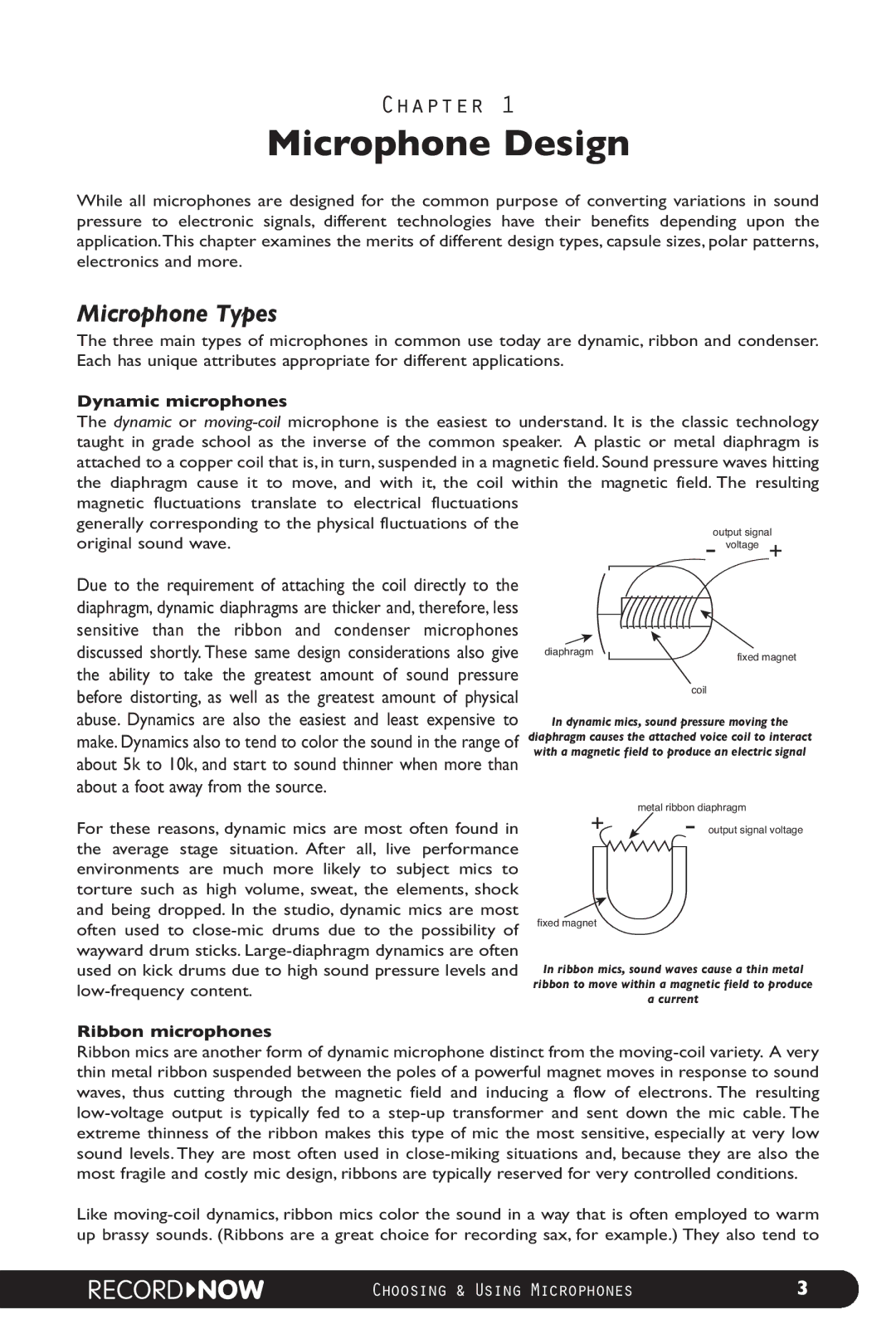
MicrophoneC apter 1Design
While all microphones are designed for the common purpose of converting variations in sound pressure to electronic signals, different technologies have their benefits depending upon the application.This chapter examines the merits of different design types, capsule sizes, polar patterns, electronics and more.
Microphone Types
The three main types of microphones in common use today are dynamic, ribbon and condenser. Each has unique attributes appropriate for different applications.
Dynamic microphones
The dynamic or
generally corresponding to the physical fluctuations of the
original sound wave. |
|
| output signal | |||
- | voltage | + | ||||
|
| |||||
Due to the requirement of attaching the coil directly to the |
|
|
|
|
| |
diaphragm, dynamic diaphragms are thicker and, therefore, less |
|
|
|
|
| |
sensitive than the ribbon and condenser microphones |
|
|
|
|
| |
discussed shortly. These same design considerations also give | diaphragm | fixed magnet | ||||
|
|
| ||||
the ability to take the greatest amount of sound pressure |
|
|
|
|
| |
before distorting, as well as the greatest amount of physical |
|
| coil |
|
| |
In dynamic mics, sound pressure moving the | ||||||
abuse. Dynamics are also the easiest and least expensive to | ||||||
make. Dynamics also to tend to color the sound in the range of | diaphragm causes the attached voice coil to interact | |||||
with a magnetic field to produce an electric signal | ||||||
about 5k to 10k, and start to sound thinner when more than about a foot away from the source.
metal ribbon diaphragm
For these reasons, dynamic mics are most often found in the average stage situation. After all, live performance environments are much more likely to subject mics to torture such as high volume, sweat, the elements, shock and being dropped. In the studio, dynamic mics are most often used to
+ | - output signal voltage |
fixed magnet
In ribbon mics, sound waves cause a thin metal ribbon to move within a magnetic field to produce a current
Ribbon microphones
Ribbon mics are another form of dynamic microphone distinct from the
Like
Choosing & Using Microphones | 3 |
